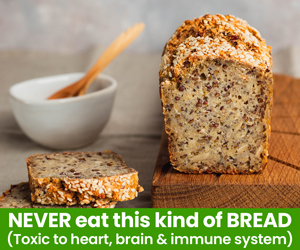
Finding your perfect carbohydrate limit is like perfecting a cherished recipe. It requires a little practice, but the outcome is incredibly rewarding. This journey transforms your body’s energy source in a powerful way.
For most people, consuming under 50 grams of net carbohydrates daily is the key. Think of this as the golden ratio for your metabolic engine. It’s the precise measurement that shifts your body from burning sugar to using fat for fuel.
This approach isn’t about limitation. It’s about understanding how your system becomes a fat-fueling powerhouse. You are simply giving your body a superior energy source.
This guide will walk you through the essentials of managing your carbohydrate intake. We will cover calculations, smart food selections, and practical tips. Our goal is to make this lifestyle feel natural and sustainable for you.
Mastering these foundational principles unlocks a world of benefits. You can experience heightened mental clarity and steady energy levels. It’s the satisfaction of creating vibrant health from the ground up.
Key Takeaways
- Most individuals need to consume fewer than 50 grams of net carbs per day to achieve a fat-burning state.
- This nutritional strategy focuses on switching your body’s primary fuel source from glucose to fat.
- Understanding your personal carbohydrate tolerance is key to long-term success on this plan.
- This way of eating is sustainable and can lead to improved energy and mental focus.
- Practical tools and food choices make adhering to this lifestyle straightforward and effective.
Introduction to Staying in Ketosis

Embarking on your keto journey feels like stepping into a professional kitchen for the first time. Everything seems new, but the potential for creating something amazing is limitless. This approach to eating opens up a world of culinary possibilities.
Setting the Stage with a Culinary Journey
Traditional eating patterns often rely heavily on flour and sugar. Think of them as following the same old recipes. The ketogenic diet introduces you to a whole new pantry of ingredients.
You’ll discover equally satisfying dishes that nourish your body differently. This nutritional strategy changes the way your system processes fuel. It’s like learning a completely different cooking style that delivers incredible results.
Understanding the Fundamentals of Keto
The core principle involves switching your body’s primary fuel source. Instead of quick-burning carbohydrates, you’ll use slow-burning fats. This metabolic shift creates steady, reliable energy throughout your day.
The standard keto diet follows specific proportions: 70-80% fats, 10-20% protein, and 5-10% carbohydrates. These ratios work like precise measurements in baking. They ensure your body receives the right balance to thrive.
Understanding these fundamentals makes everything else intuitive. You’re not limiting yourself but choosing ingredients that create the best results for your body. This way of eating represents a return to whole, quality foods.
Your body adapts beautifully to this approach over time. It’s about abundance and satisfaction, not deprivation. You’re simply learning which fuel sources work best for your system.
How Many Carbs to Stay in Ketosis

Managing your daily carb consumption resembles balancing a budget – you allocate resources wisely for maximum benefit. The golden number for most people is under 50 grams per day. This threshold acts like a precise measurement in baking.
Calculating Net Carbs for Your Keto Plan
Think of total carbohydrates as raw ingredients. Your body doesn’t process everything. To find your true carb count, subtract fiber and half of sugar alcohols.
This calculation works like weighing flour instead of measuring by volume. It gives you the exact amount your system actually uses. For example, 10 grams total carbs minus 3 grams fiber equals 7 grams net carbs.
Smart Carb Choices for Sustained Energy
Your daily carb allowance is precious real estate. Spend it on premium ingredients that deliver maximum nutrition. Leafy greens and cruciferous vegetables offer incredible volume for minimal carb cost.
These fibrous choices provide lasting satisfaction, similar to how certain spices deliver more flavor per ounce. Some people may need to start closer to 20-30 grams per day initially. This adjustment ensures your metabolic engine runs smoothly.
Berries in small amounts can be delightful treats within your budget. Precision matters most when beginning, but soon becomes second nature. You’re learning to invest your carb intake for optimal returns.
Essential Nutrient Strategies for a High-Fat Keto Lifestyle
Navigating the high-fat keto lifestyle requires the precision of a master chef balancing flavors in a signature dish. Your body thrives when you provide the right proportions of key nutrients. This approach transforms your meals into powerful fuel sources.
Balancing Protein Without Overstepping Limits
Think of protein as the art of seasoning—too little lacks structure, too much overwhelms your metabolic balance. Aim for 0.7-0.9 grams per pound of body weight. This precise measurement ensures optimal function.
Excess protein can convert to glucose, working against your goals. Choose moderate portions of quality foods like eggs, fish, and poultry. They should support your plate, not dominate it.
| Protein Source | Optimal Portion | Net Carbs (approx.) |
|---|---|---|
| Salmon (6 oz) | 1 serving | 0g |
| Chicken Thighs (6 oz) | 1 serving | 0g |
| Eggs (large) | 2-3 eggs | 1g |
| Ground Beef (85/15) | 6 oz | 0g |
Embracing Healthy Fats for Lasting Satisfaction
Adding healthy fats to meals brings everything together beautifully. Achieving 70% of calories from fat creates a solid foundation for sustained energy. This intake provides deep satisfaction.
Your pantry should include olive oil, butter, avocados, and nuts. These foods deliver the rich, satisfying experience your body deserves. Liberally add these fats to create truly delicious meals.
Keto Dieter’s Ultimate Checklist for Culinary Mastery
Building your keto culinary skills is like assembling a master chef’s toolkit—every tool has a purpose and creates something extraordinary. This approach transforms your kitchen into a creative space where delicious, satisfying meals become your daily reality.
Crafting the Perfect Plate: 12 Must-Have Elements
Your foundation for success includes these essential components that work together harmoniously. Think of them as your core ingredients for creating masterful dishes every day.
- Electrolyte management – Adding salt to foods maintains energy levels and prevents fatigue
- Net carb calculations – Mastering label reading ensures accurate daily intake
- Meal timing strategies – Finding your ideal eating schedule optimizes results
- Quality food selection – Choosing organic vegetables and grass-fed proteins maximizes nutrition
- Pantry organization – Stocking nuts, seeds, and low-carb flours keeps you prepared
- Weekly preparation routine – Batch cooking proteins and vegetables saves time
- Label literacy skills – Quickly identifying hidden carbs in processed foods
- Activity-based adjustments – Understanding when active individuals might need more carbohydrates
- Recipe transformation techniques – Adapting family favorites using smart substitutions
- Social navigation strategies – Maintaining your diet at restaurants and gatherings
- Travel preparedness plans – Packing keto-friendly snacks for trips
- Sustainable lifestyle practices – Building flexible approaches that work long-term
Adding Innovative Twists: 3 Surprise Ingredients to Elevate Your Meals
These advanced techniques add depth and creativity to your keto diet, much like secret family recipes passed down through generations.
Specialty low-carb flours like almond and coconut flour recreate baked goods with minimal impact on glucose levels. They allow for breads and crusts that satisfy cravings while staying within your carb allowance.
Texture replication using cauliflower rice and konjac noodles provides familiar comfort foods without the carbohydrates. These clever substitutions make your meals feel indulgent while supporting your goals.
Flavor enhancement techniques like browning butter and toasting spices create complex tastes without adding sugars. Incorporating umami-rich ingredients elevates simple dishes into extraordinary culinary experiences.
Demystifying Ketosis and Embracing a Fat-Fueled Journey
Understanding your body’s metabolic transformation on a ketogenic diet is like watching a simple onion caramelize into something rich and complex. This beautiful shift is the heart of achieving ketosis.
Your body initially stores glucose like a small jar of quick-use ingredients. When you limit your intake, this supply depletes. Your system then brilliantly switches to burning fat instead for energy.
Understanding Ketone Production and Metabolic Shifts
As your body breaks down fat, your liver creates ketones. These become your primary fuel source. Think of this process as rendering fat into a premium, slow-burning cooking gold.
This new metabolic state provides steady, reliable energy. Your blood glucose levels decrease, signaling your liver to ramp up production. Higher blood ketone levels are a measurable sign you’ve reached this efficient state.
Entering ketosis typically takes 2-4 days. This timeline can vary based on your metabolism, activity, and other factors. It’s a natural process, like developing a reliable sourdough starter.
This beneficial state is your body operating at peak efficiency. The ketogenic diet supports this powerful metabolic shift. You are simply choosing a superior energy source.
| Metabolic State | Primary Fuel Source | Energy Type |
|---|---|---|
| Standard (High-Carb) | Glucose | Quick, Fluctuating |
| Ketosis (Low-Carb) | Ketones | Steady, Sustained |
This type of fuel change is natural and safe. Many experience enhanced mental clarity on a ketogenic diet. Achieving ketosis unlocks your body’s innate potential for vibrant health.
Balanced Macronutrients: Fats, Proteins, and Carbs in Your Daily Diet
Creating balanced keto meals is like composing a symphony where each macronutrient plays its perfect part. Your plate becomes a canvas for nutritional artistry. The standard keto diet follows precise ratios that create metabolic harmony.
Portioning Your Plate for Peak Performance
Visualize your plate as a beautiful culinary composition. Approximately three-quarters should feature fat-rich foods. Proteins take a modest portion while low-carb vegetables provide color and texture.
The golden proportions work like classic recipe ratios. Aim for 70-80% fats, 10-20% protein, and 5-10% carbohydrates. This balance ensures your body receives optimal fuel for sustained energy.
Imagine a palm-sized salmon portion with crispy skin. Pair it with buttered asparagus and an olive oil-dressed salad. This practical approach makes meal planning intuitive and satisfying.
Smart Substitutes to Keep Carbs in Check
Think of substitutions as discovering new favorite ingredients rather than compromises. A well-stocked kitchen always has backup options ready. These alternatives often introduce exciting textures and flavors.
Your substitution toolkit should include:
- Cauliflower rice instead of regular rice for stir-fries
- Zucchini noodles replacing traditional pasta dishes
- Almond flour for baking instead of wheat flour
- Lettuce wraps as tortilla alternatives for tacos
This dietary approach naturally helps regulate blood sugar levels. It supports steady energy throughout your day. Weight management becomes a natural byproduct of balanced nutrition.
Conclusion
Your journey into ketogenic living has equipped you with nutritional wisdom that transforms everyday eating into healing medicine. You’ve mastered the precise balance needed for this metabolic state, much like a chef perfecting their signature dish. This diet represents a sustainable approach to health that people can maintain over time.
The benefits of this lifestyle extend far beyond weight loss. Many experience stable energy levels and mental clarity while managing conditions like type 2 diabetes. The initial adjustment days lead to lasting rewards as your body finds its optimal fuel source.
You now possess the complete toolkit for success with this ketogenic diet. Embrace this way of eating as a lifelong practice that supports your wellbeing. Your informed choices create a foundation for vibrant health and sustainable weight management.









